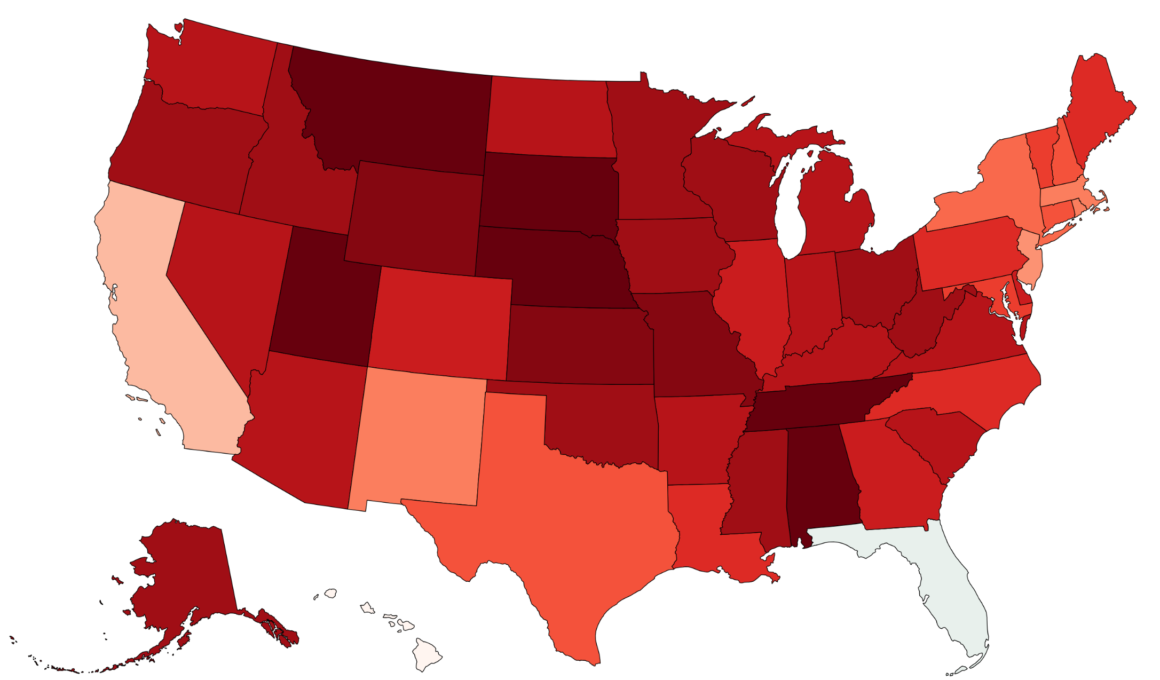A new map reveals where American men stand head and shoulders above the rest, offering insights into the various factors that contribute to height differences across U.S. states.
Towering above the rest of the world, the Dutch hold the title for the world’s tallest men, according to Data Panda, at an average of 183.78 centimetres, or six feet, 0.4 inches.
American males rank 47th globally, averaging 176.94 centimeters, or 5 feet 9.7 inches.
There is just under two inches between America’s tallest and shortest states, and understanding the differences in height across the states offers intriguing insights into the diverse demographic, nutritional, and lifestyle factors that shape population height.
Drawing on research from Data Pandas, Newsweek has created a map outlining the average height of men across the U.S.
The results place Montana, South Dakota, Alabama, Tennessee, Utah and Nebraska in joint first place, with men in these states averaging 5 feet, 10.6 inches tall.
Utah’s ranking is particularly interesting given its unique demographic composition.
The Beehive State’s population includes a significant proportion of individuals with Northern European and Dutch ancestry, around 15 percent according to Statistical Atlas, both groups historically noted for taller stature.
While there are few discernable trends across the regions, other than a moderate trend of increased height in Western and Midwestern states, Hawaii and California are obvious outliers.
At an average height of 5 foot, 9.4 inches, Californians are the second-shortest men in the U.S.

One potential reason is its high share of foreign-born residents.
According to the Public Policy Institute of California, 23 percent of the state’s population were immigrants in 2022.
Of its 10-million strong immigrant population, 49 percent were born in Latin America and 40 percent in Asia, both regions with much shorter men than the average American.
Hawaii sits on the lowest wrung, with men in the Aloha State averaging 5 foot and nine inches on the dot.
Data Panda linked Hawaii’s height to demographics, and its large Asian and Hispanic population.
Obesity, which the National Institutes of Health linked to stunted growth in a 2017 report , is also rife in Hawaii.
According to the Hawaii Department of Health, 29 percent of the state’s high school students are overweight or obese, and the figure rises to 60% for adults.
According to a study by The Washington Post, Americans have been getting progressively shorter since the 1980s, which researchers correlate with the onset of the nation’s childhood obesity epidemic.
The findings underscore the subtle yet intriguing variations in physical stature across different regions, prompting discussions about the underlying factors contributing to these differences.
Several elements play a role in determining average heights, making this study a starting point for deeper explorations into human biology and regional lifestyles.
Do you have a story we should be covering? Do you have any questions about this article? Contact LiveNews@newsweek.com.
Uncommon Knowledge
Newsweek is committed to challenging conventional wisdom and finding connections in the search for common ground.
Newsweek is committed to challenging conventional wisdom and finding connections in the search for common ground.








